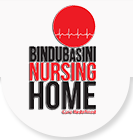Endoscopy is a procedure in which the gastro-intestinal tract (GI tract) is viewed through a lighted, flexible tube with a camera at the end (endoscope). Small samples of tissues cells (biopsy) can also be collected and sent for testing.
There are two basic types of endoscopy:
- 1. Upper endoscopy – The esophagus, stomach, and small intestines can be viewed by a thin flexible tube inserted through the mouth.
- 2. Colonoscopy – The lining of the large intestine, colon and rectum can be viewed by a flexible tube inserted through the rectum.
